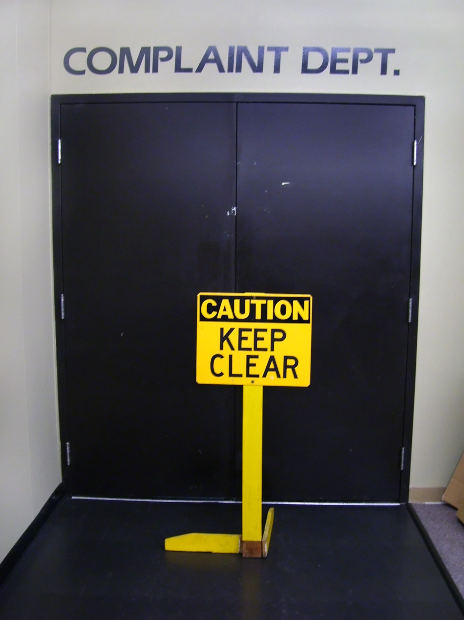
Sometimes in spite of your efforts to satisfy the needs of every patient, something may occur that leaves a member of your community less than satisfied with the services received, or business practices. Ineffectual problem management is a widespread practice in today’s business environment, but by following this easy checklist, you can ensure that you don’t loose patients, or valuable dollars from your bottom line, because someone walked away unsatisfied.
1. Adopt a positive attitude
A commonly shared positive attitude creates a personality for your business that is shared and perceived by everyone who comes in contact with your practice, and is the very foundation of good service. Without a positive attitude, even in the face of a challenging situation, you and/or your staff will lack the motivation necessary to take necessary action when a patient is less than satisfied. Additionally, attitude is contagious, and putting a positive spin on even the most difficult situation can go a long way towards changing the minds of even the most disgruntled patient.
2. Establish empathy
Someone who feels that they have not gotten what they expected is much more likely to respond favorably to your efforts if you take the time “put yourself in their shoes” and to articulate that to them. Prefacing your actions with a simple phrase like, “I can certainly understand why you must feel that way, Ms. Jones….” speaks volumes to the patient in front of you. Ms. Jones is both reassured that you are committed to her satisfaction and quality care, and comforted because she sees that you are willing to view the situation from her perspective.
3. Reassure the patient
Often, if a patient is very upset, it may be best to throw up your shields and let them vent all over you. Keep in the back of your mind that they must have a reason for feeling so negatively, take nothing personally, and let them talk–but do not get visibly upset yourself. Remember, it is your job to communicate to them that your interest lies in helping them find a solution to their grievance.
4. Identify the problem and the cause
Once the hystrionics have passed, and the patient is satisfied that you are going to work towards a resolution of their concerns, get down to brass tacks and flesh out what actually occurred and why. Analyze the situation. Was there a lack of communication, or a deficit in patient education? Was an office procedure not followed, or should a new one be created? Get to the bottom of it.
5. Guide the patient
If the issue was the result of a patient misunderstanding or not following proper procedure or instructions, gently make sure they understand their responsibility level, what they should have done differently, and how to best approach a similar situation in the future.
6. Offer an apology
Sometimes all a customer wants is a heart felt apology on behalf of the business. Do so without pointing the finger of blame towards staff members, departments, or service providers.
7. Offer alternatives
Ask the patient how he or she would like to approach solving the problem at hand. Often times patient’s will only request a fair and equitable resolution. If what he or she believe should happen is unreasonable or impossible, suggest alternatives to arrive at an amicable and fair solution. People generally respond favorably when they realize that you are not completely inflexible.
8. Solve the Problem
Act immediately to rectify the problem, realizing that customer service is of the utmost importance. If fault lie with your office or staff take appropriate action to ensure that the situation will not arise again.
9. Inform the Patient
Communicate clearly to the patient both your analysis of the problem, why it occurred, and the action taken to solve the problem. By reassuring the patient that you are on top of your business, you are much less likely to be the victim of poor word of mouth that can often occur in the aftermath of such a situation.
10. Offer Compensation
Offer the patient some sort of additional reparation to compensate for their trouble. It does not have to be monetary, but it should be perceived as valuable. Nothing calms anger more than getting something extra.
11. Monitor for Continued Satisfaction
Personally follow up with the patient periodically moving forward to ensure that history was not repeated, to reinforce a positive message, and to make sure the patient is satisfied and happy. Repeat business is necessary for survival and referrals can be the lifeblood of any practice.
Following this checklist will clarify for both the members of your practice community and the patients that they serve that yours is an organization that takes patient satisfaction seriously. Such action, in turn, will foster a culture within your office that automatically puts patients first.